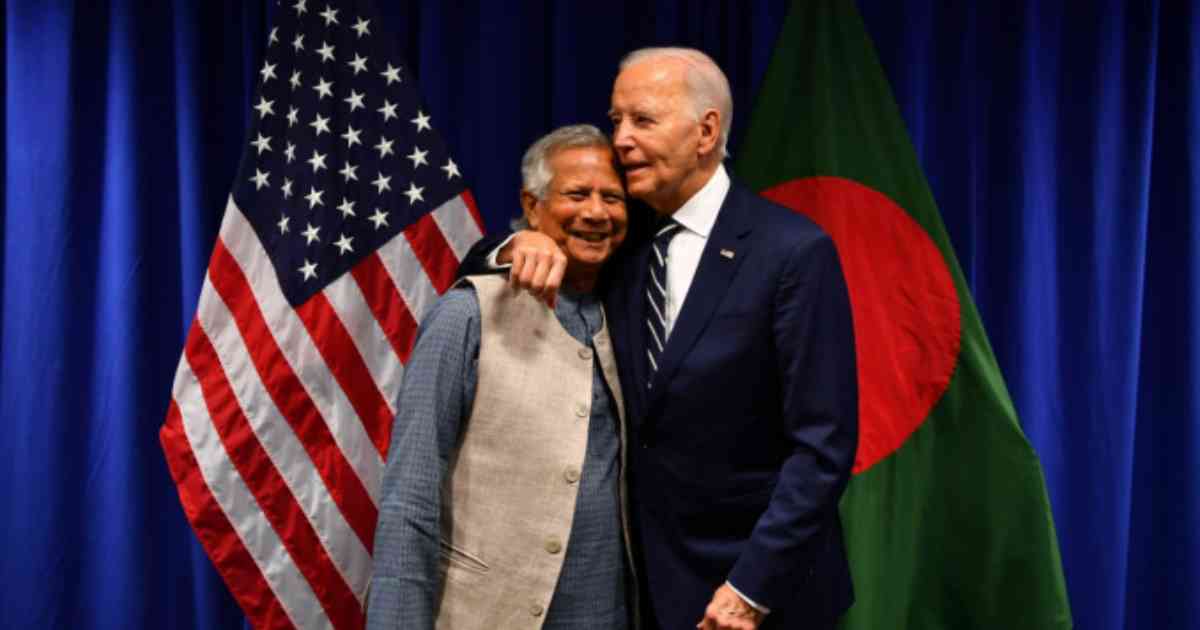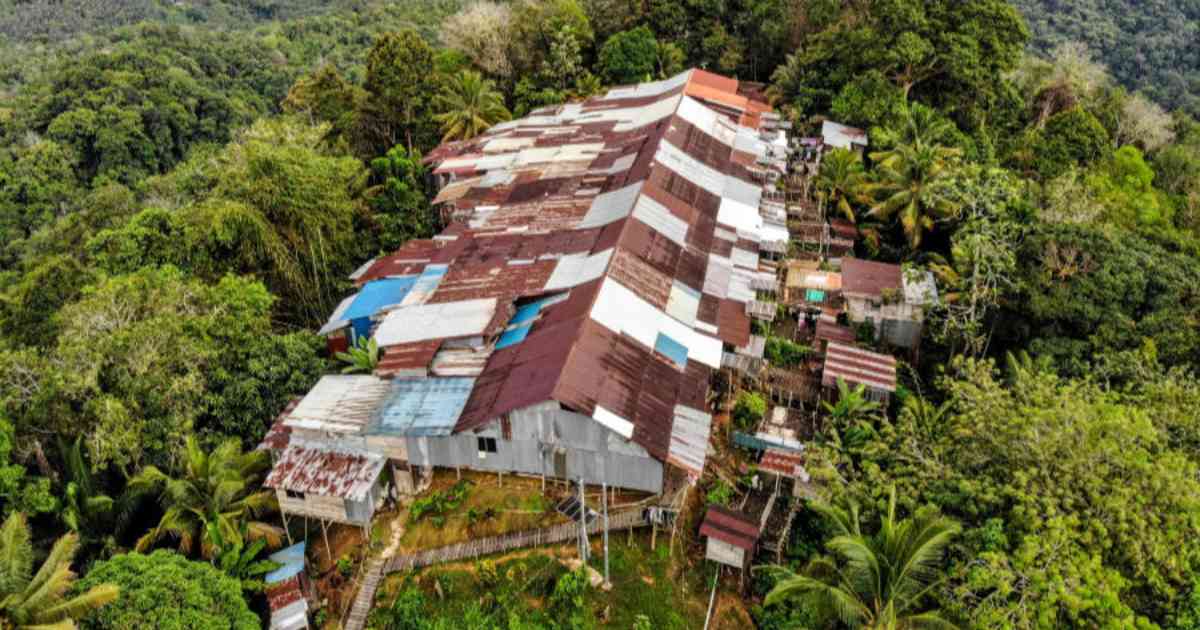World Biz
Musk’s SpaceX is building spy satellite network for US intelligence agency, sources say

SpaceX is building a network of hundreds of spy satellites under a classified contract with a U.S. intelligence agency, five sources familiar with the program said, demonstrating deepening ties between billionaire entrepreneur Elon Musk’s space company and national security agencies.
The network is being built by SpaceX’s Starshield business unit under a $1.8 billion contract signed in 2021 with the National Reconnaissance Office (NRO), an intelligence agency that manages spy satellites, the sources said.
The plans show the extent of SpaceX’s involvement in U.S. intelligence and military projects and illustrate a deeper Pentagon investment into vast, low-Earth orbiting satellite systems aimed at supporting ground forces.
If successful, the sources said the program would significantly advance the ability of the U.S. government and military to quickly spot potential targets almost anywhere on the globe.
The contract signals growing trust by the intelligence establishment of a company whose owner has clashed with the Biden administration and sparked controversy, opens new tab over the use of Starlink satellite connectivity in the Ukraine war, the sources said.
The Wall Street Journal reported, opens new tab in February the existence of a $1.8 billion classified Starshield contract with an unknown intelligence agency without detailing the purposes of the program.
Reuters reporting discloses for the first time that the SpaceX contract is for a powerful new spy system with hundreds of satellites bearing Earth-imaging capabilities that can operate as a swarm in low orbits, and that the spy agency that Musk’s company is working with is the NRO.
Reuters was unable to determine when the new network of satellites would come online and could not establish what other companies are part of the program with their own contracts.
SpaceX, the world’s largest satellite operator, did not respond to several requests for comment about the contract, its role in it and details on satellite launches. The Pentagon referred a request for comment to the NRO and SpaceX.
In a statement the NRO acknowledged its mission to develop a sophisticated satellite system and its partnerships with other government agencies, companies, research institutions and nations, but declined to comment on Reuters’ findings about the extent of SpaceX’s involvement in the effort.
“The National Reconnaissance Office is developing the most capable, diverse, and resilient space-based intelligence, surveillance, and reconnaissance system the world has ever seen,” a spokesperson said.
The satellites can track targets on the ground and share that data with U.S. intelligence and military officials, the sources said. In principle, that would enable the U.S. government to quickly capture continuous imagery of activities on the ground nearly anywhere on the globe, aiding intelligence and military operations, they added.
Roughly a dozen prototypes have been launched since 2020, among other satellites on SpaceX’s Falcon 9 rockets, three of the sources said.
A U.S. government database of objects in orbit shows several SpaceX missions having deployed satellites that neither the company nor the government have ever acknowledged. Two sources confirmed those to be prototypes for the Starshield network.
All the sources asked to remain anonymous because they were not authorized to discuss the U.S. government program.
The Pentagon is already a big SpaceX customer, using its Falcon 9 rockets to launch military payloads into space. Starshield’s first prototype satellite, launched in 2020, was part of a separate, roughly $200 million contract that helped position SpaceX for the subsequent $1.8 billion award, one of the sources said.
The planned Starshield network is separate from Starlink, SpaceX’s growing commercial broadband constellation that has about 5,500 satellites in space to provide near-global internet to consumers, companies and government agencies.
The classified constellation of spy satellites represents one of the U.S. government’s most sought-after capabilities in space because it is designed to offer the most persistent, pervasive and rapid coverage of activities on Earth.
“No one can hide,” one of the sources said of the system’s potential capability, when describing the network’s reach.
Musk, also the founder and CEO of Tesla (TSLA.O), opens new tab and owner of social media company X, has driven innovation in space but has caused frustration among some officials in the Biden administration because of his past control of Starlink in Ukraine, where Kyiv’s military uses it for secure communications in the conflict with Russia. That authority over Starlink in a war zone by Musk, and not the U.S. military, created tension between him and the US government.
A series of Reuters’ stories has detailed how Musk’s manufacturing operations, including at SpaceX, have harmed consumers and workers.
The Starshield network is part of intensifying competition between the U.S. and its rivals to become the dominant military power in space, in part by expanding spy satellite systems away from bulky, expensive spacecraft at higher orbits. Instead a vast, low-orbiting network can provide quicker and near-constant imaging of the Earth.
China also plans to start building its own satellite constellations, and the Pentagon has warned of space weapon threats from Russia, which could be capable of disabling entire satellite networks.
Starshield aims to be more resilient to attacks from sophisticated space powers.
The network is also intended to greatly expand the U.S. government’s remote-sensing capabilities and will consist of large satellites with imaging sensors, as well as a greater number of relay satellites that pass the imaging data and other communications across the network using inter-satellite lasers, two of the sources said.
The NRO includes personnel from the U.S. Space Force and CIA and provides classified satellite imagery for the Pentagon and other intelligence agencies.
The spy satellites will house sensors provided by another company, three of the sources said.

World Biz
Global Leaders Convene in Guilin to Chart Future of Tourism

The 2025 UN Tourism/PATA Forum on Tourism Trends and Outlook, held from September 18-20, concluded in Guilin, China, bringing together leading figures from over 20 countries to address the industry’s most pressing challenges. Jointly hosted by the UN World Tourism Organisation (UN Tourism) and the Pacific Asia Travel Association (PATA), the three-day event centered on building a more resilient, sustainable, and “smart” tourism sector.

- Tourism Governance: Led by UN Tourism, this session featured policy insights and international cooperation models from countries including Slovenia, Indonesia, and Brazil.
- Tourism Resilience in the Asia-Pacific: Organized by PATA, this discussion included practical case studies from Nepal and Spain, providing real-world examples of how destinations are adapting to challenges.
- Tourism Talent Development: Hosted by The Hong Kong Polytechnic University, this pillar focused on cultivating a skilled workforce to meet the evolving demands of the industry.

A dedicated Guilin Session also explored innovations in the meetings, incentives, conferences, and exhibitions (MICE) sector, with contributions from Greece, South Korea, and China.
A major highlight of the forum was the global launch of UN Tourism’s latest World Tourism Barometer, which provided updated data on international travel flows and economic impacts. Keynote speeches from industry giants like TUI Group offered a deep dive into European tourism markets, while Alipay’s Fliggy showcased new models in digital tourism. These presentations were followed by panels on the future of smart tourism destinations and new methods for tourism economic measurement.

The forum’s opening ceremony on September 19 featured addresses from Liu Shijun of UN Tourism and the President of PATA, along with local leaders. Their insights, combined with valuable case studies from delegates and experts from countries like the Maldives and institutions such as South Korea’s Youngsan University, laid the groundwork for the “Guilin Solutions”—a set of recommendations designed to advance sustainable and intelligent tourism worldwide.
Beyond the formal sessions, delegates were given a first-hand look at Guilin’s efforts to become a world-class tourism destination. Visits to local cultural and tourism landmarks demonstrated how the city is integrating culture, technology, and sustainability into its tourism strategy. The forum not only reinforced Guilin’s position as a hub for international dialogue but also offered concrete steps for building a more resilient and innovative global tourism industry.
Economy
Biden Pledges US Support to Yunus-Led Interim Government in Historic Meeting

US President Joe Biden has expressed his nation’s full backing for Bangladesh and the interim government led by Muhammad Yunus during a bilateral meeting held on the sidelines of the United Nations General Assembly (UNGA) in New York. This marks the first time in Bangladesh’s history that a US president has met with the country’s head of government at a UNGA session, as confirmed by a statement from the Chief Adviser’s Office.
In this unprecedented encounter, Chief Adviser Prof Yunus briefed President Biden on the significant sacrifices made by students who fought against the previous government, leading to the opportunity to rebuild the country. Prof Yunus underscored the importance of succeeding in this national rebuilding effort, calling for US cooperation in the process.
President Biden praised the students’ dedication, stating that their sacrifice calls for further commitment from all, including the US. During the meeting, Prof Yunus presented Biden with a copy of The Art of Triumph, a book featuring wall paintings by students and young revolutionaries.
Prof Yunus, on his first visit to the US as head of Bangladesh’s government, is attending the 79th UNGA, which runs from September 19 to 30. The theme of this year’s debate is “Leaving no one behind: acting together for the advancement of peace, sustainable development, and human dignity for present and future generations.”
Rare Diplomatic Meeting Signals Strengthened US-Bangladesh Ties
Speaking on the significance of the meeting, Chief Adviser’s Press Secretary Shafiqul Alam highlighted the rarity of such an engagement, noting that the US and Bangladesh already enjoy strong relations. “This meeting elevates our relationship to a new level,” Alam stated, as reported by local media.
Observers suggest that the bilateral meeting, which is uncommon for US presidents during the UNGA, signals Washington’s intention to support Bangladesh through its transitional period. Dhaka is hopeful that the encounter will lead to a new strategic partnership that enhances cooperation on multiple fronts.
Yunus Receives Warm Reception from Global Leaders
Earlier in the day, Chief Adviser Muhammad Yunus was welcomed by several world leaders at a reception hosted by UN Secretary-General Antonio Guterres. Held at the North Delegate Lounge in the UN headquarters, the event served to greet the leaders participating in the 79th session of the UNGA.
During the reception, Yunus exchanged greetings with Brazilian President Luiz Inacio Lula da Silva, Mauritian President Prithvirajsingh Roopun, and UN High Commissioner for Human Rights Volker Turk, among others.
Yunus Meets Canadian Prime Minister Trudeau
On the sidelines of the UNGA, Chief Adviser Yunus also met with Canadian Prime Minister Justin Trudeau. The two leaders discussed ways to enhance Bangladesh-Canada relations, focusing on fostering freedom, institution-building, and youth development in Bangladesh.
Prime Minister Trudeau commended Prof Yunus for taking on the leadership role and reiterated Canada’s willingness to support Bangladesh in strengthening its institutions. Prof Yunus, in turn, praised Canada for its enduring friendship and requested increased visa allocations for Bangladeshi students.
The chief adviser also gifted Trudeau The Art of Triumph, further highlighting the contributions of young revolutionaries. In addition to Trudeau, Yunus is scheduled to meet with the managing director of the IMF, the Italian prime minister, and will speak at the Clinton Global Initiative and Friends of Bangladesh events.
World Biz
Environmental groups urge EU ‘high risk’ label for Sarawak

Environmental and rights groups urged the European Union Tuesday to label Malaysia’s Sarawak region “high risk” under controversial new anti-deforestation rules to be implemented from the end of December.
The EU’s deforestation regulation (EUDR) is due to come into force at the end of the year, although Germany and Brazil have recently joined a string of countries urging that implementation be delayed.
Environmentalists and rights groups have, however, called on the EU to move forward with the regulation.
It will bar imports of a vast range of goods — from coffee to cocoa, soy, timber, palm oil, cattle, printing paper and rubber — if they are produced on land that was deforested after December 2020.
It also requires exporters to assess the risk of rights violations associated with production of the commodity.
In a joint statement, a group of Malaysian and international organisations said Sarawak in Malaysian Borneo should be considered “high risk” under the new rules.
Such a designation would mean closer scrutiny of timber and palm oil imported from the region — an unwelcome prospect for Malaysia, which is already pushing back against EUDR.
The NGOs argue Sarawak’s government plans to convert hundreds of thousands of hectares of natural forest to timber plantations, and is granting companies operating leases in areas that have not been surveyed for protection purposes.
Earlier this year RimbaWatch, one of the signatory groups, warned that around 15 percent of Malaysia’s natural forest is at risk because of concessions granted to companies.
Tuesday’s statement also alleges routine violations of Indigenous land rights, including limits on the amount of land that can be legally recognised, and the unilateral revocation of existing land titles.
“Logging companies are still bulldozing Indigenous peoples’ forests in Sarawak without consultation or consent from communities, which should translate into a ‘high risk’ classification,” said Celine Lim, managing director of SAVE Rivers, an Indigenous organisation from Sarawak.
– Vocal opponents –
Sarawak’s forestry department, and Malaysia’s plantation and commodities ministry did not respond to AFP’s request for comment on the claims.
Malaysia and Indonesia have been among the most vocal opponents of EUDR, arguing domestic anti-deforestation standards should be sufficient, and warning the rules will disproportionately harm smallholder producers who cannot meet onerous documentation requirements.
Environmental and rights groups have pushed back against these claims, including at talks in Brussels earlier this month between EU, Indonesian and Malaysian officials.
“Calls from EU governments to delay enforcement of the law are a deplorable abdication of leadership in the face of a climate emergency,” said Luciana Tellez Chavez, senior
environment and human rights researcher at Human Rights Watch.

